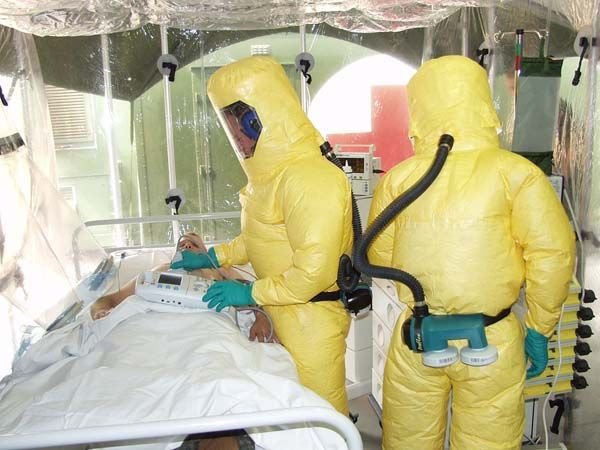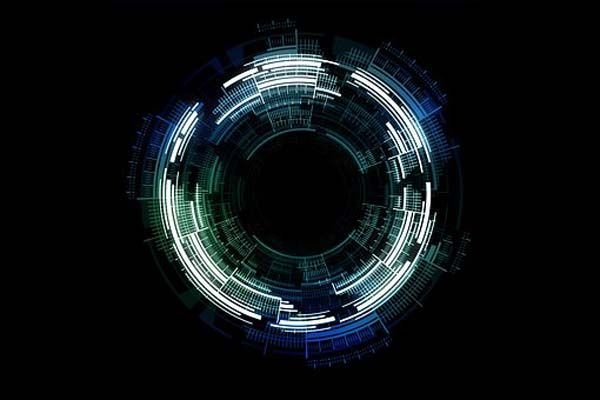If you code or you are familiar with the programming world, there is a fat chance you might have come across the words "Deep learning". This is branch of artificial intelligence that is affecting almost every application in all walks of life. It is responsible for technology as diverse as translating languages in real time to maneuvering driverless cars.
In 2016, deep learning systems like AtomNet help predict novel candidate biomolecules to resolve the Ebola epidemic. The tech giants are taking it seriously too. Google has bought Deepmind for $400M, Apple has invested in deep learning tech for its self-driving cars and Toyota has built a $1 billion AI research center.
Atomwise deep learning tech blocked Ebola infectivity

Pixabay
Deep learning is a kind of machine learning method. It can be executed by any of the following architectures;
• Deep belief networks
• Recurrent neural networks
• Deep neural networks.
This post is restricted to Deep Learning as a set of algorithms that use a neural network as its design or architecture.
Machine learning and neural networks
In the year 1949, the researcher Donald Hebb wrote "The Organization of Behavior". This paper pointed out the fact that neural pathways are strengthened each time they are used. This concept is fundamentally essential to the ways in which humans learn. He said:
If two nerves fire at the same time the connection between them is enhanced
Our brain is made up of interconnected neurons. By design, artificial neural networks are inspired by the biological neural networks that constitute the human brain. Machine learning is the branch of computing that enables computers learn without any supervisory program.
Learning nodes by artificial neural network

Source
The origin of Machine learning is traced to the year 1954 when Arthur Samuel of IBM coined the word. Even though neural networks have a long history, they became more successful in recent years due to the availability of cheap, parallel hardware e.g. NVIDIA’s GPUs and Big data. Many experiments have shown that artificial neural networks are good at processing natural data. These data type include speech, vision, and language which all exhibit nonlinear properties.

Application Areas
Drug discovery and toxicology
This is the area that has generated the most excitement. The approval procedure for drugs is cumbersome and most of them don’t get approved. Drug failures are caused by insufficient efficacy i.e. on-target effect. The Atomwise ebola example has shown how deep learning can predict biomolecular target in structure-based rational drug design.
Image recognition
This was one of the first areas of DL adaption. Now, deep learning-based image recognition has become So powerful it is producing more accurate results than human contestants. Driverless Cars that have undergone deep learning can now interpret camera images.
Mobile Advertising
Deep learning is making corporations target customers much more surgically. This has traditionally been difficult because of the large number of data points. DL has been used to interpret large, multi-dimension advertising datasets.
this data is gotten from the "request/serve/click" internet advertising cycle.
Natural language processing
Deep learning is helping solve challenges in natural language processing. This involves speech recognition, understanding, and natural language generation. For example, Google Translate is using example based machine translation. It translates whole sentences at a time and not pieces like before.
Commercial ventures
The commercial market is broad for DL. Companies like Facebook use its AI Lab Deep Learning tech to automatically tag pictures with names after uploading. In 2015, a company called Blippar demonstrated a mobile augmented reality application. It uses deep learning to recognize objects in real time.
Conclusion
The examples above are just the tip of the iceberg. Now, the trend with deep learning has started taking a new turn. Many startups are using DL technologies for online education, aids for specially-abled people, precision agriculture, policy making of nations, finding patterns in financial transactions, automation systems and security maintenance logs. If the research community can spent more time in perfecting the Deep Learning methods for detection, analysis and diagnosis of diseases, then the future is bright for all of us.
Thank you for reading

very informative, been trying to learn ML myself
Really? which tools do you use?
am still on the basics for now, early stages...some books on python..algebra...statistics for now..just began
How's that coming along? Hope well. I'm going to see how far I can go 'self-taught', before enrolling in a course.